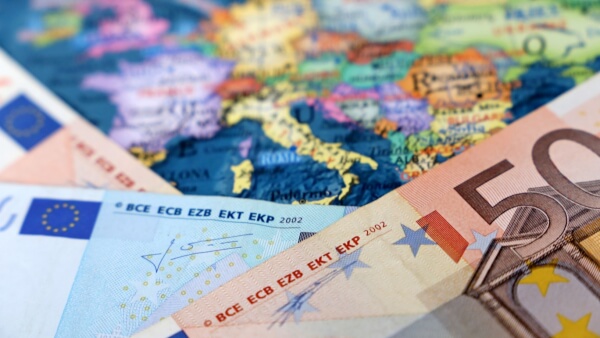Morrisons travel money exchange rate: What you need to know
Looking for a way to manage your spending while travelling? Read our guide on the Morrisons Travel Money exchange rate and other key features.

If you’re planning a holiday abroad, it’s good to think in advance about the best way to pay for things while you’re travelling.
Using debit or credit cards abroad is often the most convenient and safe option because you don’t have to deal with unfamiliar cash. Maybe you’re considering using Amex abroad during your travels.
When you’re using Amex abroad, charges apply which may be unfamiliar. This guide to using Amex abroad covers some of the common pitfalls so you can make sure your money goes further.
Prefer to spend with a debit card when you’re away? Keep the costs of travel down with the Wise account and a Wise card. Hold and exchange 40+ currencies, for spending and withdrawals at home and in 150+ countries around the world with mid-market currency exchange and low, transparent fees.*
You can use your Amex card abroad to make purchases or withdraw cash. However, the American Express network is not universally accepted, so if you're paying for goods or services you do need to check that the retailer is displaying the Amex symbol first.
In general, higher-end outlets and those used to dealing with tourists should be able to process transactions on your Amex card. However, there may be additional fees to pay when you use your card overseas. Carry an alternative in case your Amex card isn't accepted — ideally a small amount of local cash and a second payment card running a different payment system like Mastercard or Visa.
If you’re looking for the best credit card in the UK it pays to look around, and compare all of the Amex cards available to other card options provided by major banks or card networks.
Comparing foreign transaction fees is important as these can be higher than you might expect. In the UK, American Express cards are issued by the network directly, and in partnership with organisations like British Airways1. Some cards offer great travel and lifestyle benefits - but that doesn’t mean they’re cheap to use overseas. Comparing your options is key.
Generally the key costs of using a UK American Express card abroad include a foreign transaction fee, and a cash advance fee which you pay if you take money from an ATM with your Amex. As well as paying a one off fee for your cash withdrawal, interest is usually set at a higher rate compared to purchases.
While you’ll need to compare the costs of your preferred Amex cards to check, the cards we reviewed for this guide have foreign transaction fees of 2.99%, and charge 3% or 3 GBP (whichever is greater) for cash advances. Interest is higher for cash compared to standard POS transactions and purchases.2 4 6 8 10
Generally, major UK banks do not offer debit cards issued on the Amex network. Mastercard and Visa are far more commonly offered as they have greater UK acceptance.
All that said, the products banks issue do change rapidly - so if you’re able to find a UK issued American Express debit card in future, you’ll be able to use it abroad wherever you see the American Express logo displayed. Do check the fees for international use carefully, as there may be extra costs such as a foreign transaction fee. There's more on the fees to look out for coming up next.
We’ll dig into what some of these different fees all mean in more detail in a moment - but first, let’s take a look at a side by side comparison of some fees you’ll run into when choosing an American Express UK credit card.
We’ve not included every single credit card issued by American Express here, but picked out some popular options to give you a flavour.
| Amex credit card | Annual fee | Foreign transaction fee | ATM cash advance fee |
|---|---|---|---|
| American Express Cashback Everyday credit card2 | 0 GBP3 | 2.99% | 3% of value, minimum 3 GBP + interest at a higher rate |
| American Express Platinum4 | 650 GBP5 | 2.99% | 3% of value, minimum 3 GBP + interest at a higher rate |
| American Express Preferred Rewards Gold credit card6 | 0 GBP in year 1 195 GBP after that7 | 2.99% | 3% of value, minimum 3 GBP + interest at a higher rate |
| British Airways American Express credit card8 | 0 GBP9 | 2.99% | 3% of value, minimum 3 GBP + interest at a higher rate |
| Marriott Bonvoy American Express credit card10 | 95 GBP11 | 2.99% | 3% of value, minimum 3 GBP + interest at a higher rate |
Details correct at time of writing - 29th May 2024
Amex doesn’t publicly publish the exchange rates used for converting international purchases back to GBP. However, understanding the Amex currency exchange rates is still important.
When you buy something overseas - or pay online in a foreign currency, Amex will apply their own daily exchange rate to convert your purchase into pounds. The rate varies day to day, and can be found by calling Amex directly.11
Generally the rate you get is close to the mid-market rate - the one you’ll find on currency conversion tools or with a Google search. However, there may be a small markup. Also, you need to be careful here, as if you’re charged in GBP under something called Dynamic Currency Conversion (DCC), you can run into exorbitant mark-ups. But more on that shortly.
Once your transaction cost has been moved over to GBP, a foreign transaction fee will be added. This is a percentage of the amount you spent. While the foreign transaction fee can vary between cards, at the time of research, Amex was using a 2.99% foreign transaction fee for the popular cards we picked out to compare.2 4 6 8 10
If you’re taking cash out of an ATM with an Amex credit card, there will be further charges to pay. These apply whenever you're taking a credit card cash advance. At the time of writing you’ll usually pay 3% of the amount withdrawn, with a minimum 3 GBP fee - plus interest which is set at a higher rate compared to purchases.2 4 6 8 10
In addition to this, some banks or ATM providers might levy their own fees on top of your bank charges. This means that if you’re using ATMs in Spain, or using an ATM in Greece during a summer holiday, you’ll need to watch the screen carefully for notifications about ATM operator charges. These are usually shown before you confirm the payment - so you can look for an alternative ATM if you’re able to, in order to avoid this cost.
In a restaurant or store, or when you use an ATM overseas, you might also be asked if you want your purchase to be processed in GBP, as opposed to using the local currency. This is known as Dynamic Currency Conversion (DCC), and it should most definitely be avoided.
Always pay in the local currency wherever you are when you spend or use an ATM, to keep costs as low as possible. That’s because the foreign currency exchange rates applied under DCC are almost never as good as those your bank or card provider will give you. By choosing to be charged in pounds, you’re basically giving the local company or ATM machine your permission to set its own exchange rates. The rate they select is highly likely to include fees and a markup.
Finally, make sure you familiarise yourself with the credit card interest rate that will apply to your specific card. Rates can vary depending on your credit score, and the specific card you pick. They can also vary depending on the type of spending. Interest on cash advances is likely to be higher than the interest charged on regular spending or a balance transfer for example.
If your Amex card is lost or stolen you’ll need to cancel it and report it to Amex as soon as possible. It’s easiest to do this by logging into your account online or in the mobile app and looking under account settings. Here you can follow prompts to report the problem and order a new card.
You can also open a secure chat in the app - or call American Express UK on the following numbers12:
You can use a debit or credit card for secure and convenient spending abroad - there’s no single best option, so you’ll need to weigh up the benefits of the different cards you have to decide. Here are a few things to consider:
✅ Debit card pros:
⛔ Debit card cons:
✅ Credit card pros:
⛔ Credit card cons:
Before you go, let’s round up a few top tips to make sure your travel goes well, and there are no unexpected issues with using your UK American Express card overseas:
Why not get a Wise card to take on your trip along with your American Express. Wise cards are issued on the Visa or Mastercard networks - which means you can pay, even if Amex isn’t accepted - and come with great international features to cut the costs of overseas spending.
Use your Wise card in 150+ countries around the world, with mid-market exchange rates and low, transparent conversion fees from 0.35%*.
Plus, your linked Wise account can hold and exchange 40+ currencies, lets you get paid in 8+ currencies with local bank details, and has options to send money to others in 160+ countries.
Check out Wise today to see if you can manage your money at home and abroad with lower fees and easy ways to spend and withdraw around the world.
Sources used in the article:
*Please see terms of use and product availability for your region or visit Wise fees and pricing for the most up to date pricing and fee information.
This publication is provided for general information purposes and does not constitute legal, tax or other professional advice from Wise Payments Limited or its subsidiaries and its affiliates, and it is not intended as a substitute for obtaining advice from a financial advisor or any other professional.
We make no representations, warranties or guarantees, whether expressed or implied, that the content in the publication is accurate, complete or up to date.

Looking for a way to manage your spending while travelling? Read our guide on the Morrisons Travel Money exchange rate and other key features.

Should you pay with cash or card in Barbados? A handy guide including cash etiquette, Barbadian ATMs and using your UK card.

Should you pay with cash or card in Albania? A handy guide including cash etiquette, Albanian ATMs and using your UK card.

Discover how to use your Metro Bank debit card overseas. Our guide covers foreign transaction fees, exchange rates, and tips for holiday spending.

Getting ready for a trip? Read our guide on the Barclays travel credit card and plan your holiday spending.

Getting ready for a trip? Read our guide on the HSBC travel credit card and plan your holiday spending.